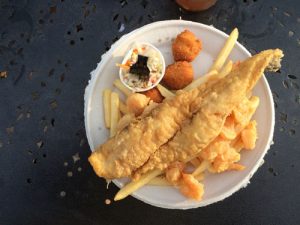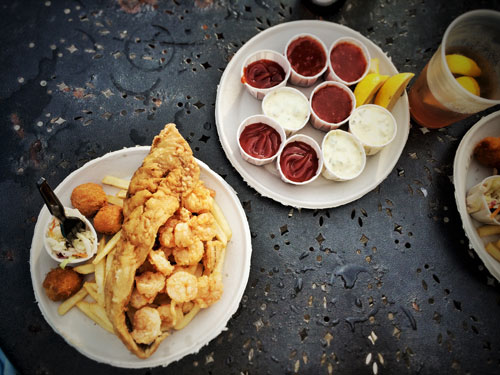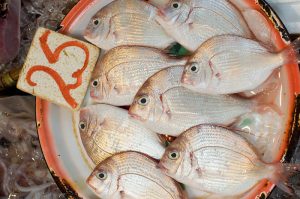 Seafood may not be barbecue but a good fish fry outdoors with friends comes pretty close.
Seafood may not be barbecue but a good fish fry outdoors with friends comes pretty close.
Seafood and barbecue both share some room on the plate for hush puppies (grab our free Sauces and Sides book for a solid hush puppy recipe). Not sure how hush puppies ever got into the barbecue category but I think it has to do with Jamaican festival).
Also barbecue and seafood are almost always served with a few sauces. Lately I’ve been feeling cheated at a few seafood houses for being stingy with the Tartar sauce so below (and in the video) are a few quick recipes  so you can make cocktail sauce and Tartar Sauce in the comfort of your own home. The video also features a visit to one of my two favorite seafood shacks of all time: Bowen’s Island. The other is Tybee Island’s Crab Shack. Neither has ever short changed me on Tartar sauce.
so you can make cocktail sauce and Tartar Sauce in the comfort of your own home. The video also features a visit to one of my two favorite seafood shacks of all time: Bowen’s Island. The other is Tybee Island’s Crab Shack. Neither has ever short changed me on Tartar sauce.
Cocktail Sauce:
- Combine your favorite Ketchup with horseradish to taste.
- Dash of worchestichire (optional)
- Dash of hotsauce (optionall)
Ingredients
- 1 cup mayonnaise
- 1 tablespoon sweet pickle relish
- 1 tablespoon minced onion
- 1 teaspoon yellow mustard
- 2 tablespoons lemon juice
- salt and pepper to taste
Instructions
- Combine all ingredients in a small bowl and mix thoroughly.
- Allow mixture to set in refrigerator for at least an hour before serving.


